Features of European beech and its cultivation
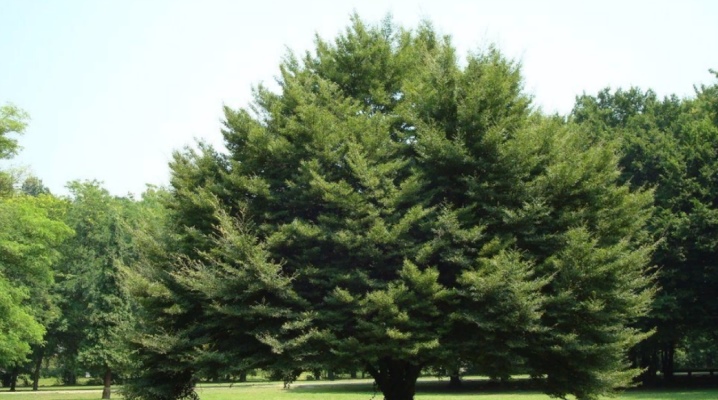
The solid European beech is famous for its special beauty. This is a truly chic, elegant tree that can become a unique decoration for any territory. The article will discuss what features are characteristic of European beech, and how it should be properly grown.
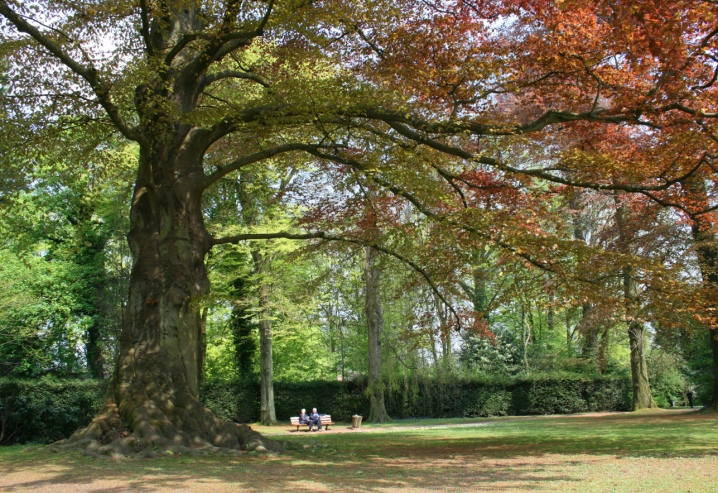
Description
European beech is a powerful deciduous tree that has beautiful slender branches.... It attracts attention with a very dense and lush crown, through which even the sun's rays cannot break through. The handsome beech lends itself to cutting and shaping, thanks to which it acquires a more well-groomed and presentable appearance. Such a gorgeous tree makes complex living walls and hedges.
The European beech is common in the Northern Hemisphere. The tree grows almost throughout Western and partly Eastern Europe. Another "relative" of the breed in question, the oriental beech, also grows here. These are truly majestic trees that form beautiful green parks, where light darkness and mysterious silence reign.
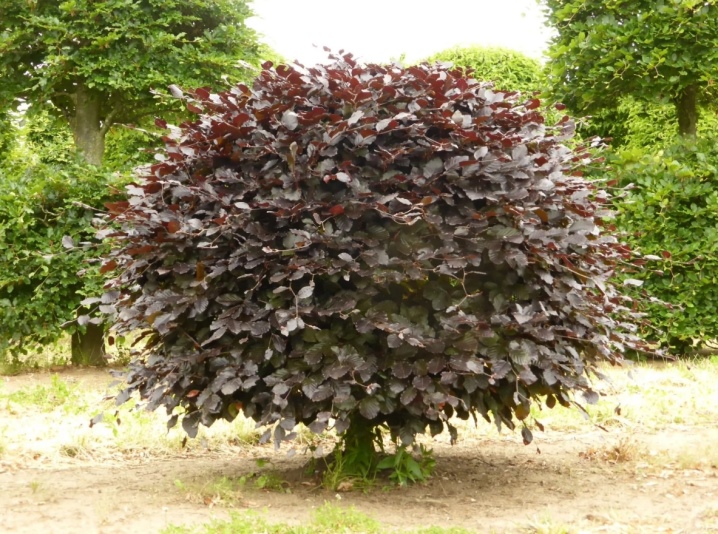
There are many subspecies of European beech, for example, red-leaved, Davik Gold, Tricolor and many others. Each of them can be a stunning addition to your landscape design. The considered tree species is distinguished by a very large and dense trunk, decorative crown. It is generally accepted that European beech accumulates positive energy, due to which it is able to maintain both physiological and emotional balance of a person.
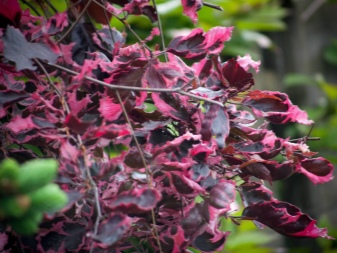
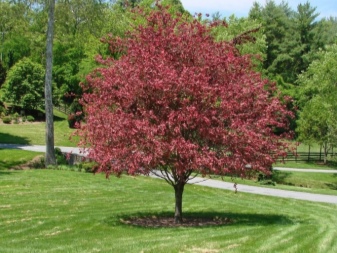
The lion's share of European beech varieties have a columnar-type trunk. The barrel thickness can be up to 2 meters. Throughout its life, this tree can grow up to 35-40 m. It has a well-branched root system. The roots grow anchored and number several. They grow very deep into the ground. But the European beech has no central rods.
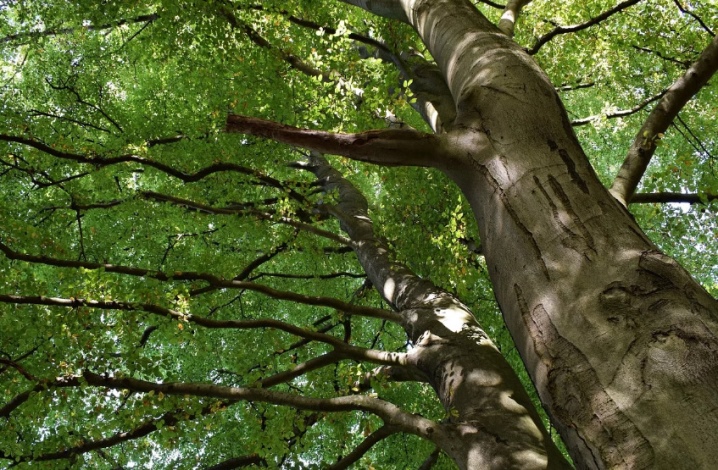
The European breed is never in a hurry to bear fruit. Usually, fruiting of this solid tree does not occur earlier than in 20-40 years. Pollination of inflorescences is carried out by the natural influence of the wind. It so happens that such a beech begins to bear fruit only after it turns 60 years old.
Young shoots of a European plant have a red or light gray bark. The leaves of plants are large and up to 10 cm long. The leaf plates grow shiny, slightly fibrous at the edges. With the onset of summer, the foliage takes on a dark green hue, and in the fall - yellow or copper.
The fruits of the European tree are nuts that look very similar to acorns. From the outside, they are covered with the same hard capsule. It is quite possible to grow a new plant from the seeds.
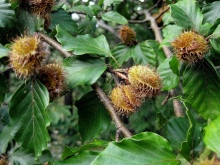
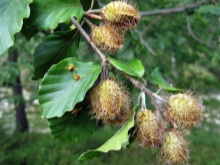
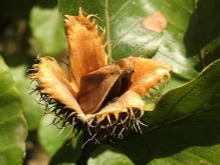
Planting and leaving
Like any other wood species, European beech requires proper planting and maintenance. Let's take a look at how to act correctly.
Preparation
For planting, you need to choose only healthy seedlings. The plant needs to be inspected for mold, putrefactive areas and other defects. It is advisable to buy seedlings from specialized nurseries.
To plant a beautiful tree, you should choose a well-lit and open area. The plant can develop in partial shade conditions. When planting, it is important to take into account the fact that the tree grows over time. At the preparatory stage, the soil must be dug up and fed using rotted compost.
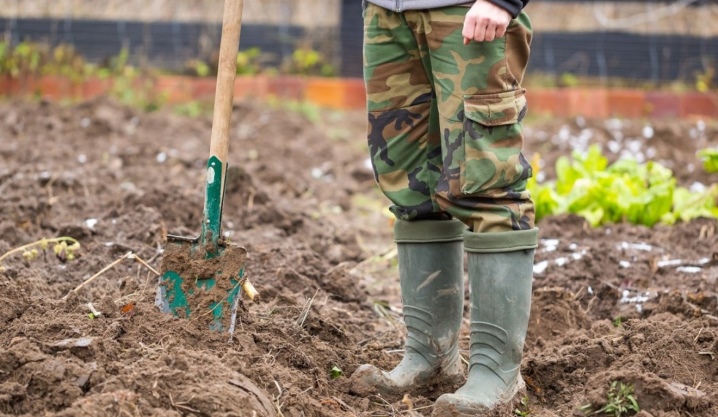
Landing
It is necessary to prepare a hole for planting a tree. Then it should be left for 2-3 weeks. During this time, shrinkage will occur. If you plant a tree right away, the soil will sink and can harm it.
The European beech should be planted in the fall, as soon as the fall of the leaves is completed. It is recommended to choose the period from October to November. 2-3 weeks before the arrival of cold weather, the seedling will have time to adapt to new conditions for it.
Consider how to plant a beech.
-
First, they dig a hole with a size of 1x1 m. The depth parameter will depend on the size of the tree rhizomes.
-
If the work is carried out in clay type soil, a layer of expanded clay or fine gravel should be placed on the bottom... The layer should be at least 5 cm.
-
To fill the excavated pit, you will need mix compost and fertile soil.
-
Part of the substrate is sent to the pit. Then a whole bucket of water is poured into it.
-
As soon as the process of soil shrinkage is completed, the plant will need to be taken out of the temporary container with the utmost care and transplanted into the finished pit.
-
The next step will need drive in the support stake.
-
Beech rhizomes need cover with soil.
-
Then soil thoroughly compact and watered well.
-
Beech tie up to the support part.
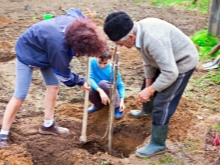
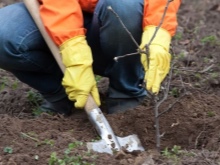
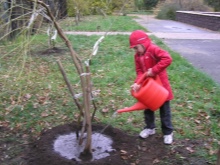
Care
There are several features of European beech care.
-
The tree does not tolerate drought very well. It is necessary to water it as the soil dries up. You need to use warm and settled water for irrigation.
-
Watering should be done in the morning or evening. Water should be poured only into the trunk circle.
-
In the spring, the beech must be fed with mineral fertilizers.... In the autumn season, top dressing is duplicated.
-
You can water the tree less often if you mulch.... Peat or humus is poured into the trunk circle. So that the water does not stagnate, after watering, you need to loosen it to a depth of 15-20 cm.
-
Beech needs sanitary pruning... It is necessary to remove old and dried branches. This should be done in early spring or late autumn. Shoots should also be cut.
-
It is advisable to cover the European beech for the winter... First, it is well watered. The trunk circle is sprinkled with a layer of humus or peat. The thickness of the sprinkling layer should be 10-15 cm.
-
A frame is required above the European beech... Then a woven fabric is attached to it.
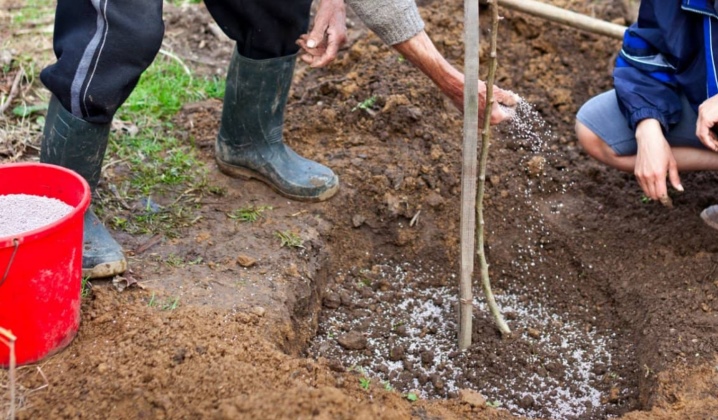
Reproduction
The easiest way to grow European beech is from seed. The collected seeds are first dried well, and then kept in cold conditions. Next, the seeds are moved into moistened sand for a couple of months. As soon as the first shoots break through, they are transferred to fertile soil.
And also, to get seedlings, you can use cuttings and cuttings. If these are cuttings, then you will need to cut the shoots, which will then be kept cool. In spring, cuttings are germinated in soil conditions. Layers must be taken from the mother tree. Then they are bent to the ground. As soon as the layers take root and let the roots go, they are deposited.
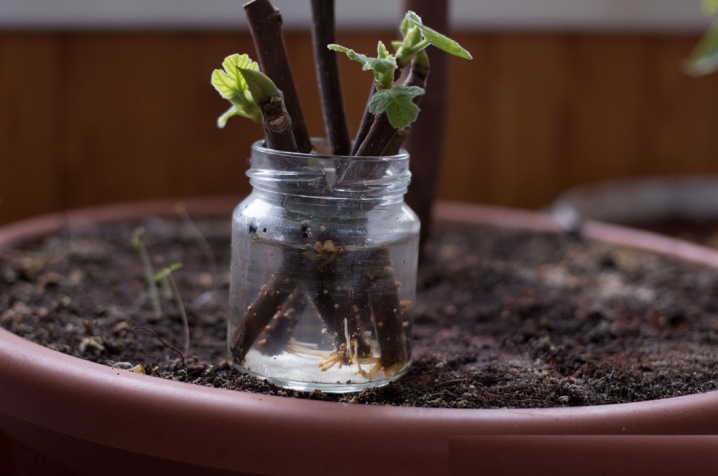
Diseases and pests
Handsome European beech is prone to serious fungal diseases. In the second half of summer, significant damage to the tree can be caused by a dangerous powdery mildew... The main symptom of this ailment is the drying out of the foliage. A separate category of fungi can provoke decay of European beech wood.
If there is a too sharp drop in temperature against the background of an increased level of humidity, then characteristic damage may appear on the trunks. This is how development takes place frosty crayfish... Beech fruits can be affected by either green or black mold. Because of this, the seeds lose their previous germination.
The caterpillars of silkworms, leafworms, moths, sickle-winged moths, and golden-tails can cause considerable harm to the European beech. These parasites actively devour the foliage of the tree, because of which it is greatly weakened. There are also types of insects that can seriously harm the young leaves of the European beech, as well as its buds and buds.
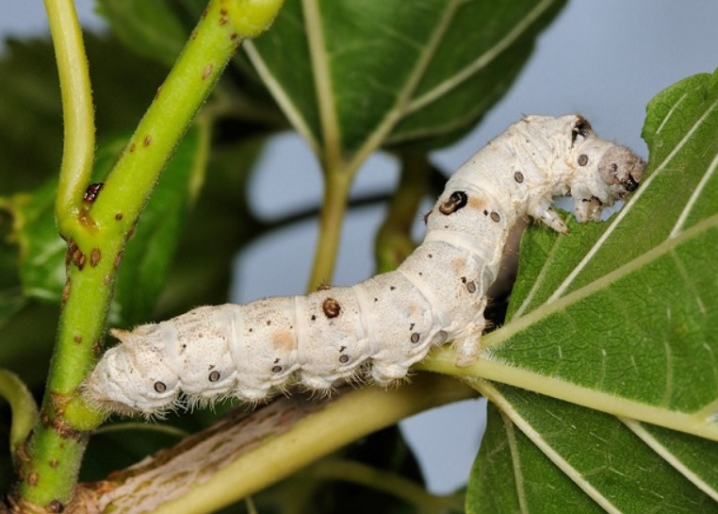
Pests that feed on wood can seriously compromise tree health. We are talking about such parasites:
-
bark beetle;
-
granular barbel;
-
arboretum;
-
woodworm.
When these pests begin to attack the European beech, its growth immediately slows down. Soon the tree begins to dry out altogether.
Mites and aphids can appear on beech shoots. Thus, entire colonies of aphids can seriously damage beech. Cracks in the crust are a striking manifestation of such events. Fruit mites suck sap from the foliage and buds of the tree.
In the fight against serious ailments and pests that can ruin the beech, they use specialized preparations. All affected areas of the tree must be removed in a timely manner. In cloudy weather or in the evening, European beech is carefully sprayed to protect against diseases.
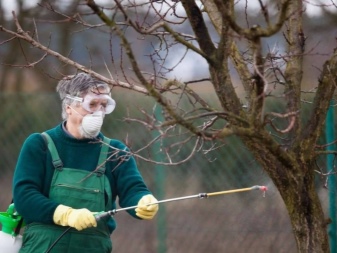
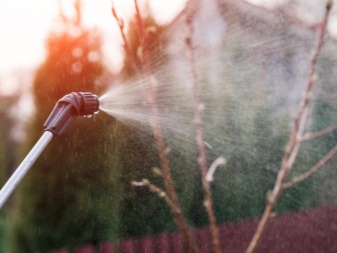
Use in landscape design
European beech can become a bright accent of landscape design. This gorgeous tree is hard to miss. It is very beautiful and lush. That is why it is the beech that is often chosen for planting in parks and alleys.
Thanks to the European beech, park and forested areas become more attractive and vibrant. Trees are planted both singly and in groups. Often combined with other types of trees. European beech is often used to form beautiful hedges as well as to decorate manicured green lawns.
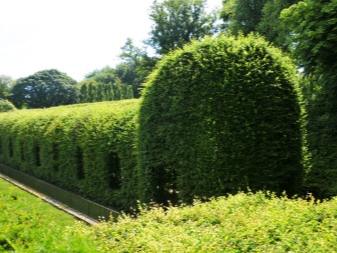
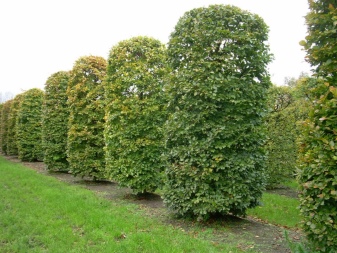
Best of all, European beech is combined with shrubs and deciduous tree species. We are talking about juniper, yew, rowan, euonymus and oak. If it is planned to draw up a more contrasting and original composition, then it is advisable to plant a European beech near conifers. It can be spruce or fir.
There are various decorative varieties of European beech. They have a different appearance, which can be very different from the original shapes and parameters. In landscape design, the most popular are the following subspecies of the tree:
-
Atropurpurea;
-
Davik Gold;
-
"Pendula" (weeping subspecies of beech);
-
"Tricolor".
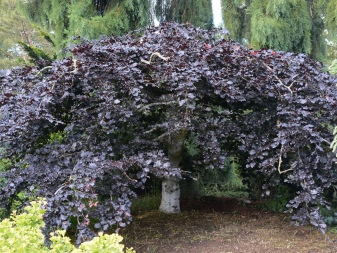
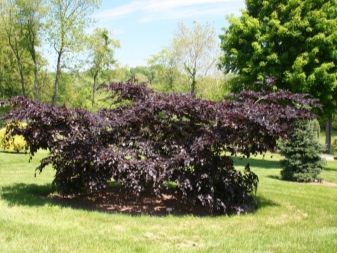
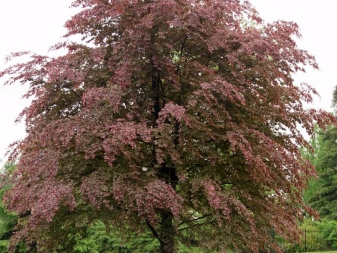
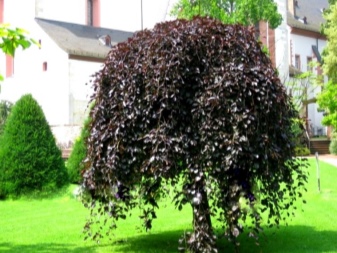
The next video tells about the European beech.































































The comment was sent successfully.